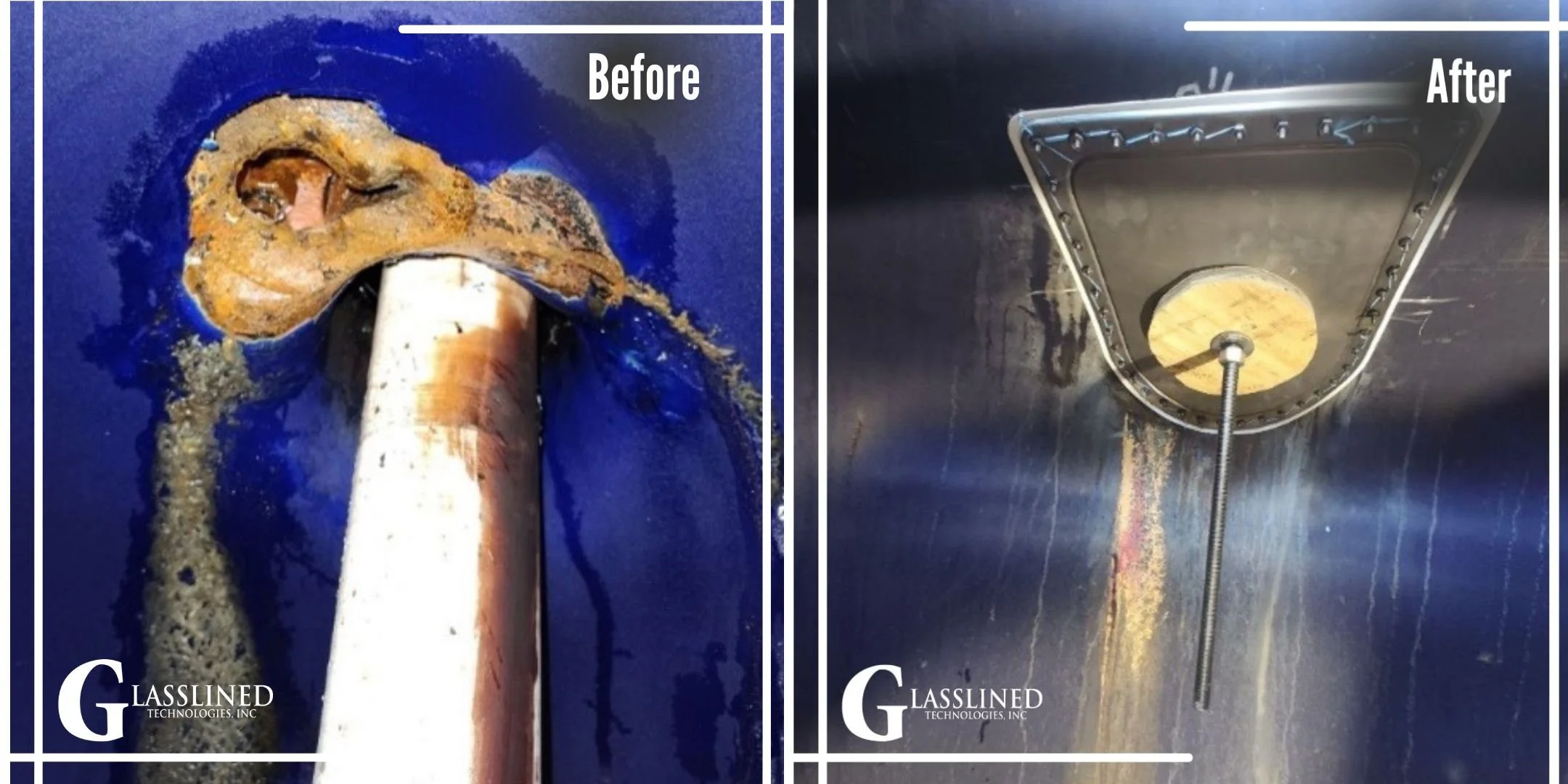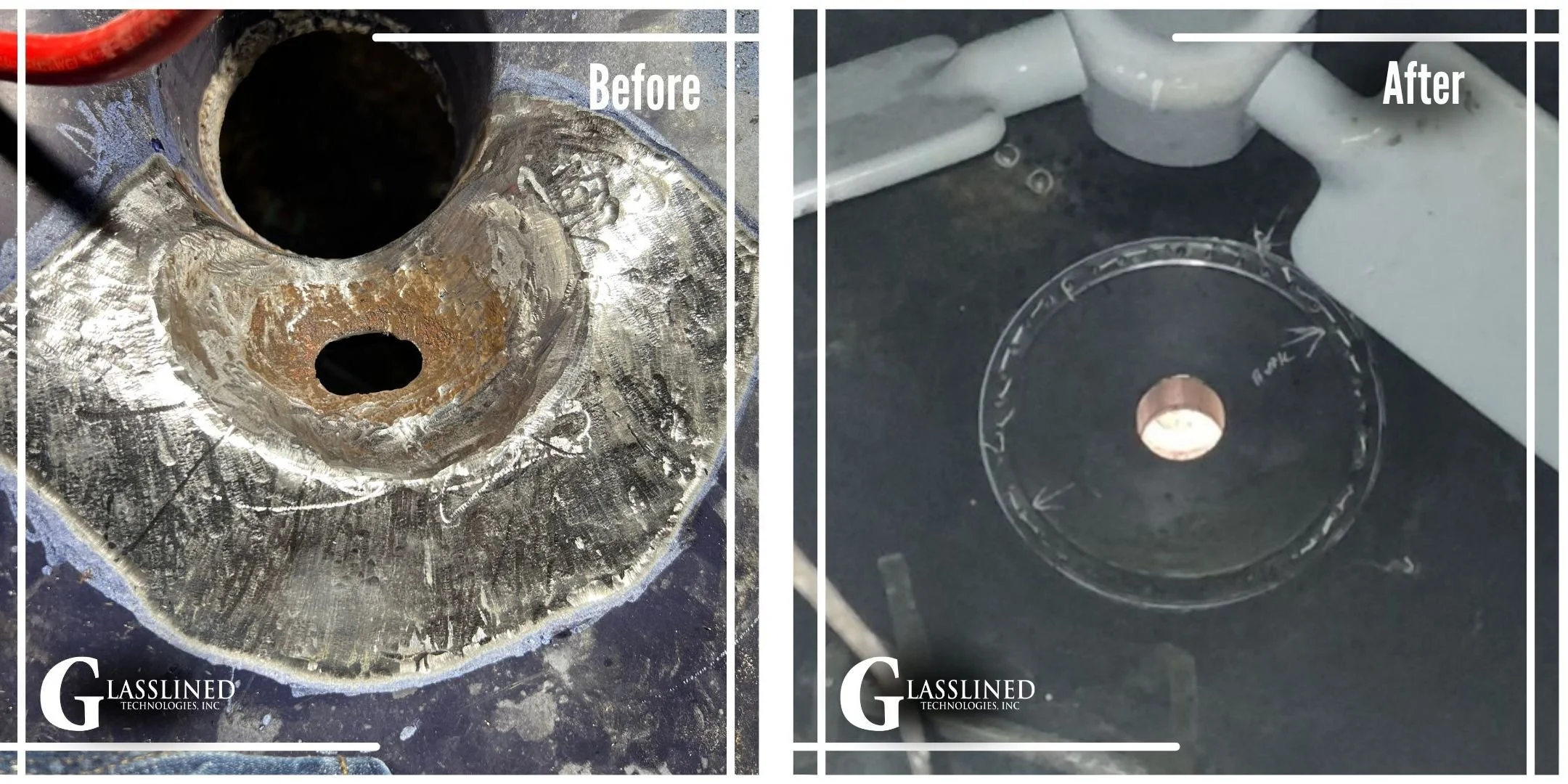When Others Say No, We Find a Way: Challenging Glass-Lined Tantalum Vessel Repairs
At Glasslined Technologies, Inc. (GTI), we specialize in tackling the kinds of repairs other companies won't touch. Glass-lined processing equipment is critical to operations—but when damage occurs, it almost always happens at the most inconvenient time. Whether it's mid- production run or outside of a scheduled plant shutdown, replacing an entire vessel often isn’t an option. That’s where we come in.
Our expert team works closely with clients to provide practical, safe, and efficient repair solutions that minimize downtime. Before any repair is performed, we conduct a thorough inspection and detailed analysis of the equipment, ensuring every decision is informed and strategic.
Here are a few recent examples of difficult but successful repairs we've performed:
Example 1: Custom Tantalum Patch in a Clean Room
A 2,000-gallon reactor located in a clean room presented a unique challenge. The vessel had developed a 6” wide ring of hydrogen fish scaling, threatening production continuity. Replacing the vessel wasn’t feasible due to strict plant shutdown schedules.
GTI was brought in to conduct a full root cause analysis and provide repair options. Our technicians—dressed in Tyvek suits, breathing air apparatus, latex gloves, and hairnets— painstakingly drilled and tapped 537 10-32 holes to install a custom tantalum patch. Working under these conditions took precision and patience, but the vessel was safely returned to production, buying valuable time until the next scheduled shutdown.
Example 2: Vertical Tank Dip Pipe Nozzle Repair
A 12,000-liter vertical glass-lined storage tank developed a hole through its 6” dip pipe nozzle. The damage was located on the top head, requiring scaffolding for access and the use of full-face respirators with supplied air due to safety protocols.
Before repairs began, our team performed a full vessel inspection—checking glass thickness, performing spark testing, and conducting exterior assessments. After a joint review with the plant’s engineering and production teams, a plan was established: GTI would perform a temporary repair while a new vessel underwent reglassing.
Working alongside the Authorized Inspector (AI) and ASME-certified welders, we welded the damaged area to within 75% of the vessel’s original design thickness—sufficient to meet corrosion resistance requirements while minimizing thermal shock to the surrounding glass lining.
Example 3: Emergency Repair After Vessel Leak
In this case, a vessel developed a leak that spilled contents onto the floor. The root cause? An impeller had fallen into the vessel weeks prior. Unfortunately, the initial repair technician failed to identify underlying stress damage, and the area gave way over time.
When called in, GTI collaborated with the AI and ASME welder to determine the best approach. We custom-fabricated a certified, traceable steel sample, formed precisely to the vessel’s radius. The weld was carefully executed to limit thermal shock to the surrounding glass, and a tantalum sleeve was installed and sealed, restoring integrity to the vessel.
The GTI Difference
At Glasslined Technologies, we pride ourselves on saying “yes” when others say “no.” We don’t just repair—we analyze, collaborate, and solve. Whether it’s a temporary fix to buy time or a custom-engineered patch to extend production runs, we’re committed to keeping your operation moving safely and efficiently.
If you’re facing a difficult glass-lined vessel repair, don’t settle for a one-size-fits-all answer. Let’s talk about your options—and let us help you find the best path forward.




